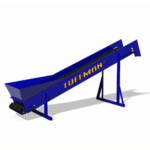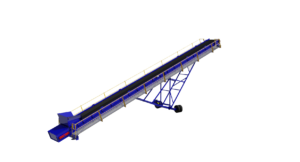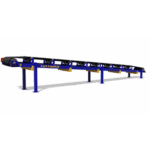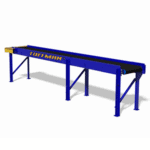Inclined Slider Conveyors
Tuffman® offers regular and heavy-duty incline slider belt conveyors. These conveyors can be added to the infeed conveyor that comes with every Tuffman® recycling sorting station, or purchased on their own for a transportation solution.
Inclined belt conveyors can be used in multiple industries including automotive, transportation, manufacturing, or recycling. An inclined slider conveyor is perfect to feed the sorting material into a trommel screen or from the trommel screen to a sorting station. These conveyors are also ideal for moving products from one floor to another, or when moving delicate or fragile material. Inclined belt conveyors are designed to be run for extended periods of time with no drain inefficiency.
Conveyors are available for individual purchase or as an add-on to any sorting station. Choose your desired length and quantity below and add to your inquiry, or contact us for more information and customization. Other options such as variable speed conveyor drives, belt cleaners, and other accessories are also available to help you incorporate an inclined slider conveyor into any conveyor system.




